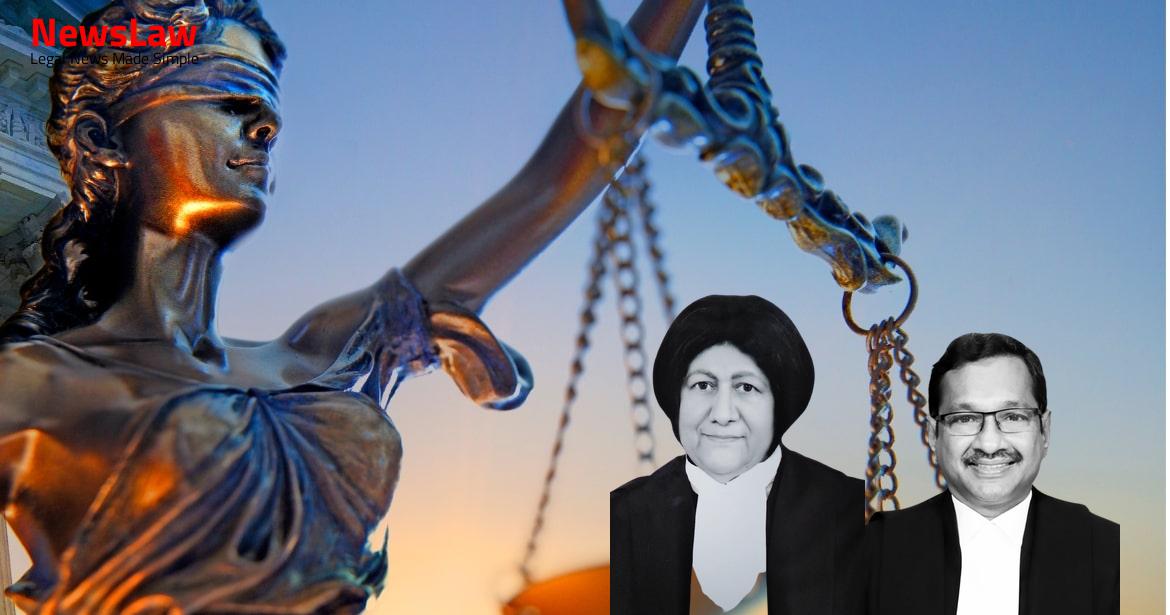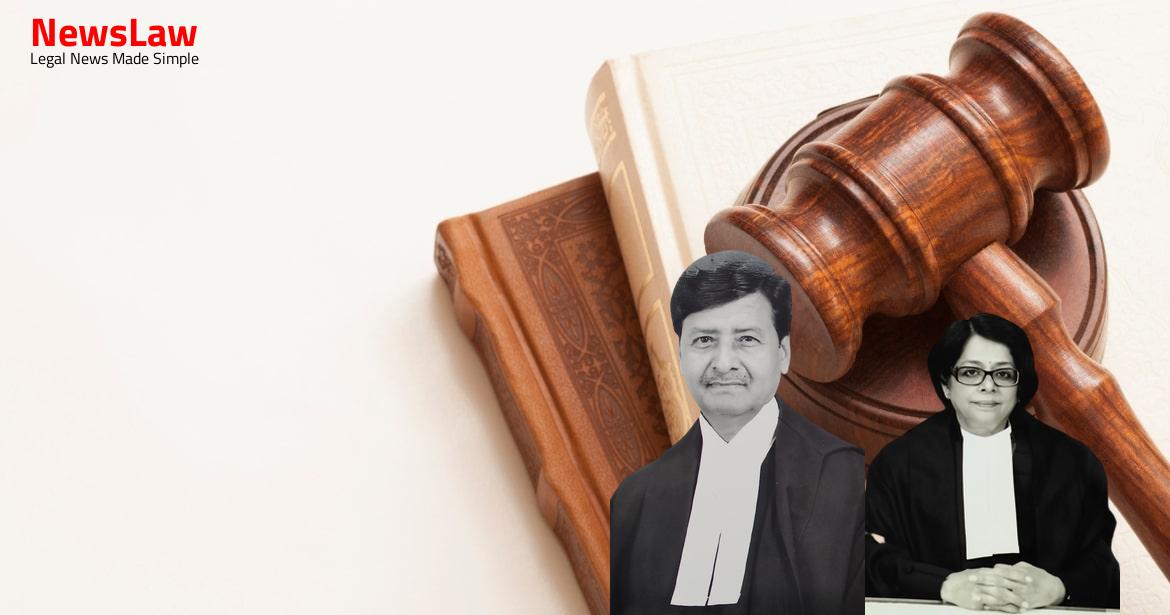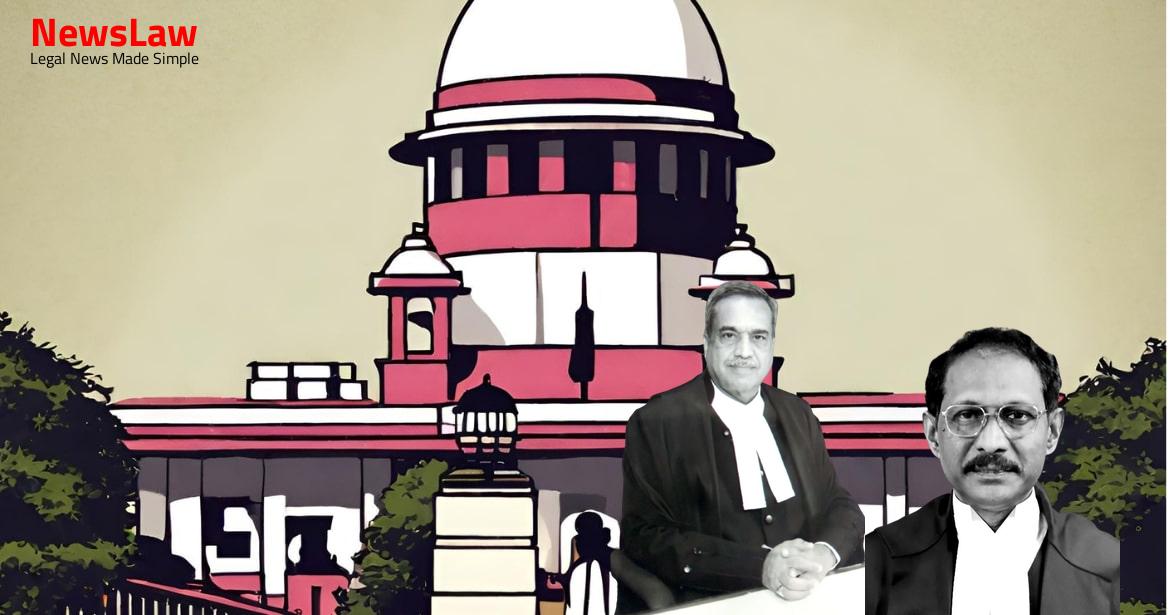Delve into the complexities of limitation in Insolvency and Bankruptcy Code (IBC) proceedings as examined by the court. The analysis focuses on the application of the Limitation Act, emphasizing the requirement of sufficient cause for filing within the stipulated timeframe. Discover key insights into determining the accrual of the right to sue and the impact of continuous cause of action in limitation cases. Stay informed about the legal implications surrounding the initiation of Corporate Insolvency Resolution Process (CIRP) and the discretion of NCLT/NCLAT in entertaining appeals after the limitation period.
Facts
- The NCLAT directed for settlement between the parties before admission of the case.
- The Respondent filed a Winding Up petition on 22 December 2015 in the Madras High Court.
- The NCLAT set aside the NCLT’s order rejecting the Respondent’s application under Section 9 of the IBC.
- The case was remitted to the Adjudicating Authority for admission after notice to the parties.
- This appeal is against the NCLAT’s judgment dated 23 July 2019.
- The Appellant and the Respondent had an agreement for hiring a crane for IOCL site at Paradip, Odisha.
- The Adjudicating Authority rejected the application as barred by limitation.
- Invoices were raised by the Respondent on the Appellant between 3 January 2012 and 4 March 2013.
- The High Court returned the Winding Up petition to the Respondent for curing defects on 5 January 2016.
- A petition under Section 9 of the IBC was filed on 30 March 2018.
- The IBC came into force on 1 December 2016.
- Statutory notices were issued by the Respondent to the Appellant for winding up and payment.
- Correspondence and representation regarding the Winding Up petition continued.
- The Adjudicating Authority directed notice to be issued to the Appellant on 20 June 2018.
- 11. The relevant date for limitation is the date when the right to sue accrues, which is the date of default.
Also Read: Ex post facto Environmental Clearance in Bio-Medical Waste Case
Analysis
- Section 5 of the Limitation Act gives the Court a discretion to condone the delay in filing an application or appeal.
- The exercise of discretion must be in accordance with established judicial principles.
- The existence of sufficient cause is a prerequisite for condonation of delay.
- In Radha Export (India) Private Ltd. v. K.P. Jayaram and Anr., an application under Section 7 of the IBC was held to be barred by limitation.
- Limitation of three years under Article 137 of the Limitation Act can be extended under Section 5 of the Act.
- The condition precedent for exercising discretion under Section 5 is the presence of sufficient cause.
- The judgment in B.K. Educational Services Pvt. Ltd. emphasized the importance of sufficient cause for not filing within the prescribed limitation period.
- Explanation for delay in filing application must constitute “sufficient cause” which is dependent on facts of each case.
- Acknowledgment of liability may commence a fresh period of limitation.
- Onus is on Appellant to prove sufficient cause for delay in filing application against rejection based on limitation.
- Enforcement date of IBC is irrelevant in limitation computation.
- Initiating CIRP within three years from date of IBC application filing is crucial, not from enforcement date of IBC provisions.
- Provisions of Limitation Act are applicable to IBC proceedings.
- Pendency of parallel proceedings in another forum is not sufficient cause for delay in filing under Section 9 of IBC.
- Section 14(2) of Limitation Act allows exclusion of time in certain circumstances.
- NCLT/NCLAT has discretion to entertain application/appeal after prescribed limitation period.
- Section 18 of Limitation Act – acknowledgment of liability in writing starts a fresh period of limitation, if made before previous period expires.
- Proceedings in good faith in a forum lacking jurisdiction may save limitation.
- Date when right to sue accrues and possible continuous cause of action are crucial in limitation cases.
- Claim may not be barred by limitation, but the remedy for realizing the claim can be barred by limitation.
- Initiating proceedings in the Madras High Court does not save limitation for initiating proceedings for CIRP in the NCLT under Section 7 of the IBC.
- The impugned order of the NCLAT is unsustainable in law.
Also Read: Land Dispute Legal Analysis
Decision
- The Respondent is not prevented from pursuing other remedies available to them
- The Respondent can pursue any pending proceedings in accordance with the law
- The impugned order of the NCLAT is set aside
- The appeal is allowed
Also Read: Legal Analysis of Appeal Provisions in Admiralty and Commercial Court Cases
Case Title: M/S. TECH SHARP ENGINEERS PVT. LTD. Vs. SANGHVI MOVERS LIMITED (2022 INSC 986)
Case Number: C.A. No.-000296 / 2020



